The Great American Nude Series
Starting from 1961, Tom Wesselmann gained attention in the art world with his Great American Nude series. He had a dream with the phrase “red, white, and blue” after which he decided to use those colors for the Great American Nude primarily. The also adopted colours associated with patriotic motifs including khaki and gold. He also infused in the Great American Nude, representational images carved in patriotic themes including portraits of founding fathers and American landscape photos.
He mostly sourced his images from discarded magazines and posters. Tom Wesselmann also made friends with the Curator, art historian, and art critic, Henry Geldzahler who further introduced him to Alex Katz and this would lead to his first solo show. Katz offered him the opportunity to exhibit at the Tanager Gallery. He displayed both large and small Great American Nude collages at the exhibition. He followed it with a one-man exhibition in the Green Gallery in 1962.
That same year, Tom Wesselmann took part in the New Realist exhibition that gave birth to what became known as the Pop Art. Other artists at the exhibition included Robert Indiana, Claes Oldenburg, Jim Dine, and George Segal among several others. Some of his works under Great American Nude including Great American Nude #53, Great American Nude #57, and Great American Nude #82, emphasized on a more explicit and sensual disposition of female nudity.
advertisement
advertisement
Later Works
Tom Wesselmann also started the new series of still life in 1962. He began the series by experimenting with collage and assemblage. His works in this series include Still Life #28 that consists of a television set that was turned on, Still Life #59, comprising five panels that form a large, elaborate dimensional, freestanding painting and Still Life #60, 1974, which was almost 26 feet (7.9 m) long.
The next series was the Drop-Out series, which were created with the negative space around the breast in focus and later worked on the Sunset Nudes series. Tom Wesselmann also worked on the Bedroom Painting series. Some of his other works include New York City Beauty,2001, Sunset Nude with Matisse, 2002,
advertisement
advertisement
№2 Rideau, Cruchon et Compotier (Гардина, кувшин и ваза для фруктов), художник: Поль Сезанн
Год: 1894
Rideau, Cruchon et Compotier (Jug, Curtain and Fruit Bowl) (1894) — Paul Cezanne
Поль Сезанн считается величайшим мастером натюрморта, и эта работа является его самой знаменитой картиной в этом жанре. Технически отмечается двойная перспектива, которую создал Сезанн, она визуально захватывает зрителя красиво написанными несбалансированными частями. Подобные картины Сезанна считаются прелюдией к нескольким типам искусства двадцатого века, включая кубизм Пикассо. По состоянию на 2015 год эта картина является самым дорогим натюрмортом, когда-либо проданым на аукционе.
Useful Resources on Tom Wesselmann
Books
websites
articles
video clips
Books
The books and articles below constitute a bibliography of the sources used in the writing of this page. These also suggest some accessible resources for further research, especially ones that can be found and purchased via the internet.
biography
-
Tom WesselmannOur Pick
Edited by Stephanie Aquin
-
Tom WesselmannOur Pick
By Slim Stealingworth (pen name for Tom Wesselmann)
-
Tom Wesselmann: His Voice and Vision
By John Wilmerding -
Tom Wesselmann: A Survey, 1959-1995
By Sam Hunter
artworks
-
Tom Wesselmann: Nudes and Abstracts
By Tom Wesselmann -
Tom Wesselmann: Works on Paper: Retrospective 1960-2004
By Tom Wesselmann and Kate Wesselmann -
Tom Wesselmann: Early Still Lifes, 1962-1964
By Tom Wesselmann with an introduction by Thomas Garver
View more books
websites
articles
video clips
Summary of Tom Wesselmann
Initially a cartoonist for men’s magazines, Tom Wesselmann reduced the classical female nude to her essential components: lips, nips and pubes. His Venuses have tan lines. Cigarettes dangle from their rocket-red mouths. Their crisp outlines resonate with the immediacy of a neon sign. Like the nudes of Titian, Velasquez, or Rubens, Wesselmann’s mid-century modern nudes sprawl across furniture in suggestive poses, awaiting a lover the viewer naturally assumes is him. Wesselmann’s chief interest was not to draw attention to the subject, but «to make figurative art as exciting as abstract art.» He succeeded brilliantly at this, and his work engages our senses — as Jim Dine told him before Wesselmann’s first show in New York, «You may be one of America’s great painters.»
Accomplishments
- With its fetishistic isolation of erogenous zones (hair, lips, nipples, teeth, etc) Wesselmann’s imagery reintroduces the ideal female form to art. Wesselmann’s is a post-Abstract-Expressionist incarnation of the ideal body for the consumer age, something to be consumed like a bottle of beer, a tabloid, or a comic book. The most blatantly erotic of the Pop artists, Wesselmann connected commercialism and voyeurism with unprecedented force.
- More directly and succinctly than that of any other artist, Wesselmann’s work sums up the handoff of Pop from England to America, where Pop art gets bigger, bolder and cruder, almost as if responding to the geographic environment.
- The influence of De Kooning on Wesselmann would be difficult to overestimate. An early infatuation with De Kooning led him to fuse the language of billboards with Abstract form. In 1994 Wesselmann admitted «In my early days, I was so envious of de Kooning that I almost stopped being a painter.» De Kooning’s famous Women series of the 1950s was essentially the impetus for Wesselmann’s life’s work.
- Never at ease with the Pop art label, Wesselmann felt that he lacked the drive toward cultural critique that characterized the movement: «My culture was what I used» he explained. «But I didn’t use it for cultural reasons, it was not a cultural comment.»
- Wesselmann is fascinating to compare with someone like Claes Oldenburg, whose suggestive Lipstick (Ascending) on Caterpillar Tracks (1969) also substitutes the part for the whole, but in a more open-ended way. His lack of subtlety is part of what makes Wesselmann Wesselmann.
№3 «Васильки», Исаак Левитан
Год: 1894
«Васильки», 1894 г. Частная коллекция (Москва), Исаак Левитан
Левитан любил натюрморты, и иногда, после прогулок в лесу, его мастерская походила на цветочный магазин. Он любил изображать полевые и лесные цветы на своих полотнах, чтил природу даже в самых скромных, простых ее проявлениях.
На картине «Букет васильков» мастер не изобразил вокруг вазы с цветами ни одной детали. Ничто не должно отвлекать зрителя от нежных васильков. На первый взгляд, цветы очень похожи между собой, но при более внимательном рассмотрении обнаруживается, что все иначе. Каждый василек имеет собственный оттенок — здесь и насыщенно-синие, и голубые, и розовые, и нежно-фиолетовые и даже белые.
С цветами в букете соседствует пшеница, пара ее колосков. Это создает ощущение небрежности, будто колоски попали в вазу по невнимательности. Однако в этом заключается особая притягательность композиции, ее шарм.
Социальные комментарии и критика
Помимо технических аспектов, серия «Натюрморт» Вессельмана получила признание благодаря лежащим в ее основе социальным комментариям и критике. Включив в свои произведения популярные образы, брендинг и рекламу, Вессельманн стремился спровоцировать размышления о влиянии потребительской культуры на общество. Он поставил под сомнение влияние рекламы, коммерциализацию повседневной жизни и объективацию женщин. В своих композициях Вессельманн активно затрагивал современные проблемы, заставляя зрителей подвергнуть сомнению всепроникающее влияние средств массовой информации и потребительства. Эта социальная критика, включенная в его серию «Натюрморт», в значительной степени способствовала ее известности и постоянной актуальности.
В заключение отметим, что серия «Натюрморт» Тома Вессельмана продолжает пользоваться популярностью по нескольким причинам. Инновационная композиция, смелое использование цветов, исследование женских форм, интеграция техник коллажа и лежащие в основе социальные комментарии — все это способствует непреходящей популярности и влиянию этих произведений искусства. Способность Вессельмана бросать вызов традиционным художественным нормам и вызывать критическое мышление укрепила его место в качестве выдающейся фигуры в сфере поп-арта.
The 2000s
In the later years, Wesselmann returned to the female form and also produced a number of abstract works on metal panels. His abstract nudes of the 2000s, which combine 3d figures and shaped canvases, became a manifestation of all discoveries he made during his career as the pop art leader. Wesselmann’s works are exhibited in the USA and England and can be found in many collections all around the world. The latest monograph on Wesselmann’s “Great American Nudes” was released in 2020 by Susan Davidson and The Estate of Tom Wesselmann.

Curled Up Blue Nude 2001oil on canvas49 x 55 inches (tomwesselmannestate.org)
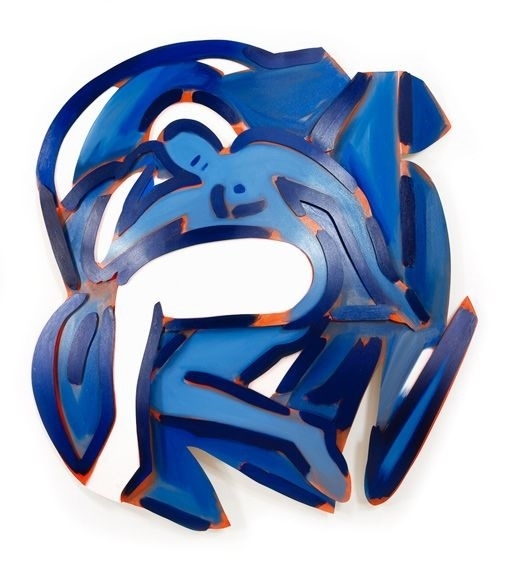
Blue Nude #21 2001oil on cut-out aluminum74 x 69 x 8 inches (tomwesselmannestate.org)
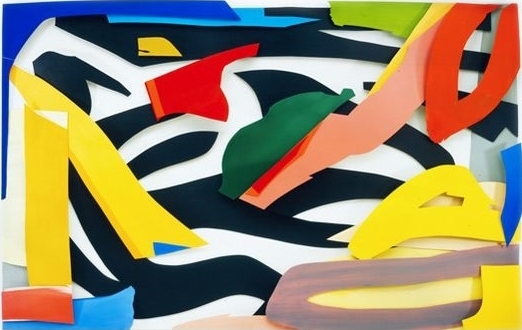
Foursome 1998oil on cut-out aluminum (3 sections)101 x 158 x 7 inches (tomwesselmannestate.org)
And, last but not least, our favorite sensual series “The Smoker” (1970s)




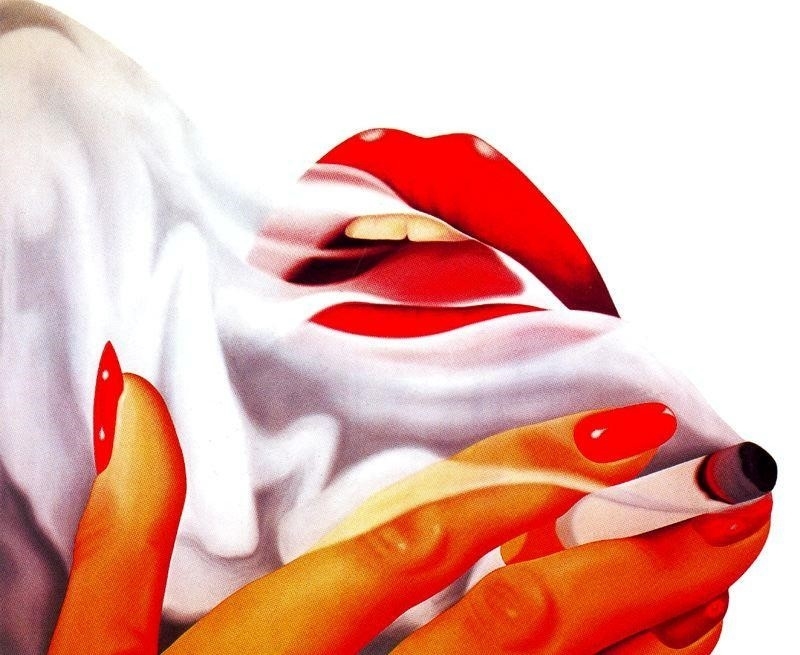
More information on this artist you can find at tomwesselmannestate.org.
Click HERE for another notable ambassador of the pop-art genre who has a sensual premise…!!
Let us know your thoughts on this article in the comment box below….!!
№5 «Натюрморт», Казимир Малевич
Год: 1911
«Натюрморт», 1911 г. Государственный Русский музей (Санкт-Петербург), Казимир МалевичЧувствуя себя реформатором, Малевич восставал против реализма, а классицизм считал изжившим себя. Он хотел вносить через искусство изменения в повседневность. Помощниками в этом были холст, краски и кисть. Натюрморт с густыми полосами, объемными фруктами и плоской посудой — плод творческих поисков Малевича. Все ее части объединены лишь контрастным цветом, очень характерным для художника. В центре композиции расположилась белая ваза, которую окружают фрукты. Некоторые из них обозначены лишь контурами с залитым цветом внутри, другие изображены с элементами реализма благодаря частичной прорисовке их объема. Ни белой вазе, ни черному кувшину, ни тарелке теней не досталось. Малевич был уверен, что действительность вторична по отношению к живописной форме.
Tom Wesselmann
Cincinnati
1931 —
New York
2004
Tom Wesselmann was born in Cincinnati / Ohio on 23 February 1931. Between 1945 and 1951 he studied at the Hiram College in Ohio before studying psychology at Cincinnati university. One year later he was called up for military service due to the Korea war. Being discontented with his situation he began to draw cartoons at that time. In 1954 he resumed his studies and apart from this he attended the art academy. He moved to New York and attends Cooper Union School for Arts and Architecture in 1956. He earned his living by working as a cartoonist for several journals and magazines as well as by teaching at a highschool in Brooklyn. At the end of the fifties a series of collages in small format were created being regarded as precursors of the later series «Great American Nudes» and «Still life» in big format. Out of these collages he developed first nude depictions in 1960. His first single exhibition took place at the Tanager Gallery in New York in 1961. One year later he participated in the group exhibition «New Realists» at the Sidney Janis Gallery, his international career with numerous exhibitions started off. The same year his first assemblages with the title «Still Life» came into existence. In 1963 Tom Wesselmann married his girl-friend and fellow student Claire Selley, who also was his most important model. He began a series of «Bathtub Collages». In 1966 the first of many one-man shows took place at the Janis Gallery. In 1964 Tom Wesselmann began with further series, e.g. «Bedroom Paintings», «Seascapes» and «Smokers», which he continued until the early 1980s. In 1980 he published a treatise about his artistic development under the pseudonym Slim Stealingworth. In 1983 first «Metal Works» were produced, which were based on the artist’s drawings and sketches and which are still in the centre of the artist’s interest. In 1994 a comprehensive retrospective took place at the Kunsthalle in Tübingen.Tom Wesselmann died in New York on 17 December 2004. His choice of trivial motifs, thier monumentalisation, reduction to stereotypes, sexual embelematic as well as the use of bright colours made Tom Wesselmann a co-founder of the American Pop-Art during the 1960s.
Tom WesselmannStudy for Metal Compote and Fruit
27,750 $Details
James RosenquistPlaymate
1,110,000 $Details
Andy WarholFlowers (10 Blatt)
888,000 $Details
Robert RauschenbergPosse Stir (Galvanic Suite)
222,000 $Details
Allen JonesFemale Spear
166,500 $Details
Robert RauschenbergBicycloid VII
111,000 $Details
Andy WarholGoethe
66,600 $Details
Andy WarholDetails of Renaissance Paintings (Sandro Botticelli, Birth of Venus, 1482)
55,500 $Details
Инновационный состав
Одной из основных причин популярности серии «Натюрморты» Вессельмана является новаторская композиция произведений искусства. В то время как традиционные натюрморты часто изображают повседневные предметы, расположенные в реалистичной манере, Вессельманн бросил вызов этим условностям, включив современные образы и исследуя нетрадиционные композиции. Его композиции включают в себя сочетание ярких фруктов, цветов и предметов домашнего обихода с элементами поп-культуры, такими как реклама, логотипы брендов и изображения обнаженных женщин
Это уникальное сочетание предметов повседневного обихода и популярной культуры подняло жанр натюрморта на новую высоту, завоевав внимание и восхищение любителей искусства во всем мире
№13 «Цветы и плоды», Иван Хруцкий
Год: 1839
«Цветы и плоды», 1839 г. Государственная Третьяковская галерея (Москва), Иван Хруцкий
Иван Хруцкий — прославленный мастер живописи, чьи работы сегодня признаны настоящими шедеврами. Его натюрморты породили целую волну подражаний и имели успех у публики. Одним из лучших его произведений смело можно считать «Цветы и плоды». Оно пропитано осенними мотивами. Спелый виноград, груши, лимоны, персики, тыква говорят о том, что пришло время собирать урожай. По смотрящим вниз пионам видно плавное увядание природы. Зеленые, синие, розовые, желтые оттенки символизируют самую пеструю пору осени. В центре композиции — ваза с рельефными животными и растениями. Они являются лишь частью декора вазы, однако привносят в натюрморт оживленность. Стакан с лимонной водой (рядом с вазой) не только гармонирует с виноградом, но и с блестящим стеклянным сосудом позади. Еще один замечательный элемент композиции — тыква. Это самый крупный, весомый плод на картине Хруцкого, он делает ее более основательной. Маленькая гроздь винограда на переднем плане находится так близко к краю стола, будто скоро сорвется и упадет. Такой интересный прием художник использовал, чтобы сделать натюрморт более подвижным.
The 1970s
In the next decade, Wesselmann continued working with the ideas and media he used in the 1960s. The most significant works of these years were his large Still Life paintings representing different objects in an expressionist advertising style. Another remarkable series was the famous “Bedroom Paintings,” depicting naked bodies and genitalia blended in the interior. “Landscape” and “Seascape” series demonstrate the evolution of the artist in terms of media usage and approach to depicting things. Canvases changed their shapes and lines. Every painting became a piece of a puzzle of the world beyond the canvas.

Bedroom Painting #19 1969oil on canvas64 x 90 inches (tomwesselmannestate.org)

Bedroom painting (blogspot.com)

Bedroom Painting #11 1969oil on canvas54 x 67 inches (wordpress.com)
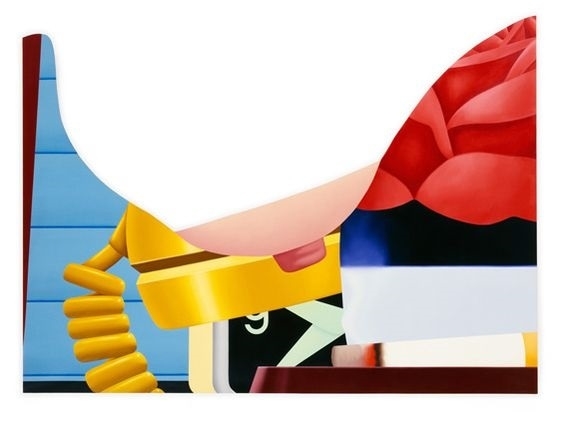
Bedroom Painting #26 1972oil on shaped canvas75-1/8 x 102-3/8 inches (tomwesselmannestate.org)

Bedroom painting oil on shaped canvas

Bedroom Tit Box 1968-70oil, acrylic, assemblage and live breast6 x 12 x 8 1/2 inches (tomwesselmannestate.org)

Seascape #27. Almine Rech Gallery (cloudfront.net)

Girl eating a banana, Almine Rech Gallery (artrabbit.com)
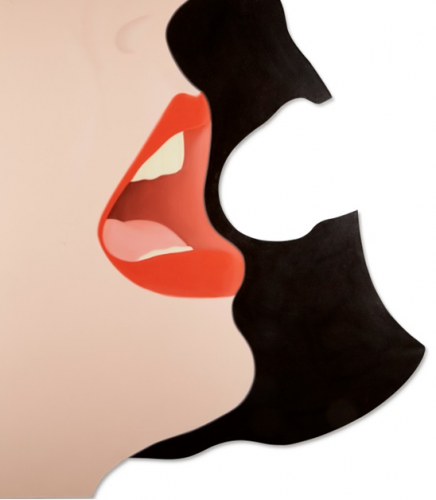
Face #1 (blog.daum.net)

Seascape (Tit), 1967Screenprint on paper18 × 18 in45.7 × 45.7 cm (moma.org)
Seascape #23, 1967 (dreamtheend.com)

Seascape #10 1966molded Plexiglas painted with gripflex44-1/2 x 58-1/2 x 1-3/4 inches (tomwesselmannestate.org)
Карьера
Он поступил на факультет психологии в 1951 году, но в следующем году был призван на корейскую войну . Однако в конце концов его отправили в Форт-Райли в Канзасе .
Он создавал комиксы о военной жизни, позже разнообразив свои темы. Он оставил армию ( ) , возобновил свою степень психолога и получил высшее образование в 1956 году . Именно тогда он переехал в Нью-Йорк, чтобы посвятить себя комиксам. Он учился в Cooper Union School of Art and Architecture до 1959 года .
Его первые попытки художника под влиянием Виллема де Кунинга были основаны на модном тогда абстрактном экспрессионизме . В 1959 году он сделал свои первые абстрактные коллажи, но вскоре увлекся фигурацией Матисса , Ван Гога и Модильяни , а в следующем году написал свои первые фигуративные работы, в том числе пейзажи .
Его первая персональная выставка в галерее Танагер в Нью-Йорке состоялась в 1961 году . В том же году он начал свой обширный цикл « Великих американских обнаженных тел » . Первые коллажи были мелкоформатными , но более поздние были выполнены маслом (лат . oleum oil) и акриловыми красками в больших форматах. В некоторые из них он включил реальные предметы. ]
Полотно из этой серии « Обнаженная № 1 » 1970 года висит в музее Тиссена-Борнемисы в Мадриде.
Позже Вессельманн создал серию о курильщиках, а также огромные натюрморты с предметами повседневной жизни, такими как бытовая техника , бутылки, мороженое. Он экспериментировал со скульптурой с помощью вырезанных пластин.
Его графическое творчество обширно и охватывает различные техники ( литография , шелкография , акватинта ).
Он снялся в хите-антологии в Японии в 1993-94 годах.
Tom Wesselmann and his Place in Art History
As is usually the case, the years following Wesselmann’s death were marked by a sudden and renewed interest in his life and work. Many retrospective shows were held and Tom’s contributions to the Pop art evolution were finally brought to full light, despite his regular protest against the membership in this movement. Wesselmann’s legacy was secured whilst his Venuses with tan lines, cigarettes dangling from their rocket-red mouths and modern nudes sprawling across furniture in suggestive poses effectively entered art history. Ultimately, after all was said and done, it comes as no surprise that the legendary Jim Dine once stated that Tom may very well be one of America’s greatest modern painters to date.
This artist is represented by Woodward Gallery New York, Galerie Fluegel-Roncak, Galerie Thalberg Zurich, Puccio Fine Art, and Gregg Shienbaum Fine Art Miami.
References:
- Aquin, S., Tom Wesselmann, Prestel Publishing, 2012
- Fritz, N., Tom Wesselmann: Pictures on the wall of your heart, Ravensburg, Germany, 2008
- Letze, O., Tom Wesselmann, Cantz, 1996
Featured image: Tom Wesselmann — Photo in his studio in March 1969 — Image via gettyimages.com.au
All images used for illustrative purposes only.
From a Cartoonist to a Painter
Wesselmann was born and raised in the city of Cincinnati. After what was a very happy childhood, he spent two years at the Hiram College in Ohio before transferring to major in Psychology at the University of Cincinnati. Since he was drafted into service by the US Army in 1952, Tom had a lot of spare time on his hand from the moment he was stationed stateside. It was during this time that he made his first cartoons and became interested in pursuing a career in illustrating. After returning home, Wesselmann began to study drawing at the Art Academy of Cincinnati and achieved some initial success, like selling his first cartoon strips to the magazines 1000 Jokes and True. Tom soon came to live in NYC and after a visit to the MoMA, he was inspired by the Robert Motherwell painting Elegy. This fascination drove Wesselmann to reject the ideas of action painting, but it also transformed him into a painter instead of a cartoonist. In the meantime, Wesselmann became one of the founding members of the Judson Gallery alongside a few friends who had just arrived in New York. Tom’s series Great American Nude, begun during the year of 1961, first brought him to the attention of the art world. This series was extremely patriotic in nature as the artist focused on the use of American red, white and blue. Images also incorporated other representational depictions of patriotic themes such as American landscape photos and portraits of founding fathers. The pictures from the Great American Nude were mostly collaged from magazines and discarded posters, which called for a much larger format than Wesselmann had used previously in his career. These pieces were also the ones to be displayed at Tom’s first solo exhibition at the Tanager Gallery. Soon Wesselmann became a vital part of the Pop art scene and started both collaborating and exchanging ideas with the prominent artists of the new movement.
№12 «Натюрморт с сиренью», Кузьма Петров-Водкин
Год: 1928
«Натюрморт с сиренью», 1928 г. Частная коллекция, Кузьма Петров-Водкин
Картина — типичный образец стиля художника. Он характеризовался незаурядной палитрой цветов, различными оптическими иллюзиями и новыми для зрителя точками обзора. Привычные вещи Петров-Водкин изменяет, прибегая к фактурному и цветовому контрасту предметов на картине. Центр композиции — ветка сирени, поставленная в стакан воды, и, скорее всего, свежесрезанная. Она окружена чернильницей из хрусталя, а также письмом, спичечным коробком, опавшими листьями и экземпляром L’Art Vivant. Именно этому французскому журналу в 1925 году Кузьма Сергеевич давал интервью. Композиция расположена на синей скатерти. Это произведение очень напоминает другое его «детище» — более позднюю «Черемуху в стакане» (1932). Натюрморт имеет большое значение в искусстве как жанр, позволяющий говорить языком предметов, создавать эмоциональную атмосферу. Сегодня он не утратил популярности. Многие маститые и начинающие художники изображают плоды, цветы, другие предметы в различных стилях. Наверняка некоторые из них со временем станут предметом восхищения и настоящей классикой.
The 1960s
Like many representatives of the Pop Art genre, Wesselmann created works incorporating everyday objects. His bright-colored paintings are close in their vividness to abstract expressionism, which he much admired. Great American Nude is his best-known series of that period. Here Wesselmann was undoubtedly inspired by avant-garde painters such as Matisse with his intense colors.

Great American Nude #8 1961mixed media and collage on board48 inches in diameter (tomwesselmannestate.org)

Great American Nude #29 1962mixed media and collage on board36 x 48 inches

Great American Nude #35 1962mixed media, collage and assemblage on board48 x 60 x 2 inchesSydney & Francis Lewis Collection, Virginia Museum of Fine Arts (tomwesselmannestate.org)

Great American Nude #48 1963oil and collage on canvas, acrylic and collage on board, enameled radiator and assemblage (including window illumination)84 x 108 x 34 inches (tomwesselmannestate.org)

Great American Nude #52 1963acrylic and collage on board60 x 48 inchesBerardo Collection (tomwesselmannestate.org)

Great American Nude #57 1964acrylic and collage on board48 x 65 inchesWhitney Museum of American Art (tomwesselmannestate.org)

Great American Nude (blogspot.com)
Slim Stealingworth
In the 1980s, Wesselmann took the pseudonym Slim Stealingworth and wrote an autobiography documenting his artistic development. While continuing to explore shaped canvases, the painter began working with metal panels to make his paintings more dimensional. Having published an account on his creative evolution, Wesselmann didn’t stop expanding artistic possibilities and exploring new ways of depicting reality. In the 1990s, he produced images using 3-d technologies, which he described as going back to what he had desperately been aiming for in 1959.

Bedroom Painting #60 1983oil on masonite and steel80-3/4 x 117-1/2 inches (tomwesselmannestate.org)
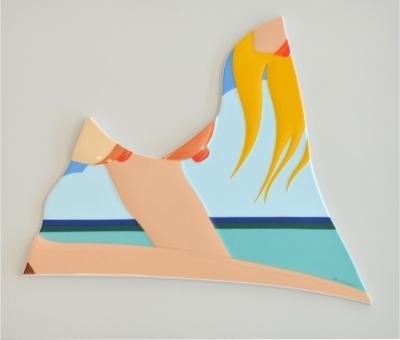
Seascape Dropout (1980s), incollect.com

Bedroom Painting #71 1983oil on shaped canvases90 1/2 x 101 inches (tomwesselmanestate.org)

Bedroom Painting #67 1983oil on shaped canvas94-1/4 x 60 inches (tomwesselmanestate.org)

Great American Nude #88 (blogspot.com)

Vivienne 1985enamel on cut-out aluminum82 inches (diameter) (tomwesselmannestate.org)

Monica Nude with Matisse (Var #1) 1987enamel on cut-out aluminum57 x 92 inches (tomwesselmannestate.org)

Monica in Robe with Wesselmann 1992alkyd on cut-out aluminum69 x 53 inches (tomwesselmannestate.org)

Monica and Matisse Interior with Phonograph (3-D) 1988/93oil on cut-out aluminum71 x 47 x 3 inches (tomwesselmannestate.org)

Blue Nude Drawing oil on canvas (10/29/99) 1997/99oil on canvas48 x 64 inches (tomwesselmannestate.org)
Некоторые экспонаты
| групповые выставки | Индивидуальные экспозиции |
|---|---|
|
|
Early Life
Thomas K. Wassermann was born on February 23, 1931, in Cincinnati. Raised in Cincinnati, he first received a college education at the Hiram College, Ohio in 1949, and after two years of studies transferred to the University of Cincinnati, Ohio where he majored in Psychology. His studies at the University were interrupted by service to the nation, as he was enlisted into the United States Army in 1952 for the Korean War. During his service, he developed a great interest in arts, making cartoons to kill his boredom.
This interest developed to a level that Tom Wesselmann decided to pursue it as a career. After his military service, he continued his education graduating with a degree in psychology in 1954. Wassermann later enrolled at the Art Academy of Cincinnati for his art studies. In 1956, he was accepted at IN Cooper Union in New York City to continue his studies.
His first cartoon strips were sold to 1000 Jokes and the True magazines. Some of his early inspirations were the Robert Motherwell’s “Elegy to the Spanish Republic” and works of William de Kooning but later rejected action painting. It was during a landscape-painting trip to Cooper Union’s Green Camp in rural New Jersey that he realised his real passion was in painting than cartooning.
advertisement
advertisement





























